PlantCell Organelle and Function, All Cell Organelles and Functions mine
1/35
There's no tags or description
Looks like no tags are added yet.
Name | Mastery | Learn | Test | Matching | Spaced |
|---|
No study sessions yet.
36 Terms
cell membrane
determines what goes in/out of cell
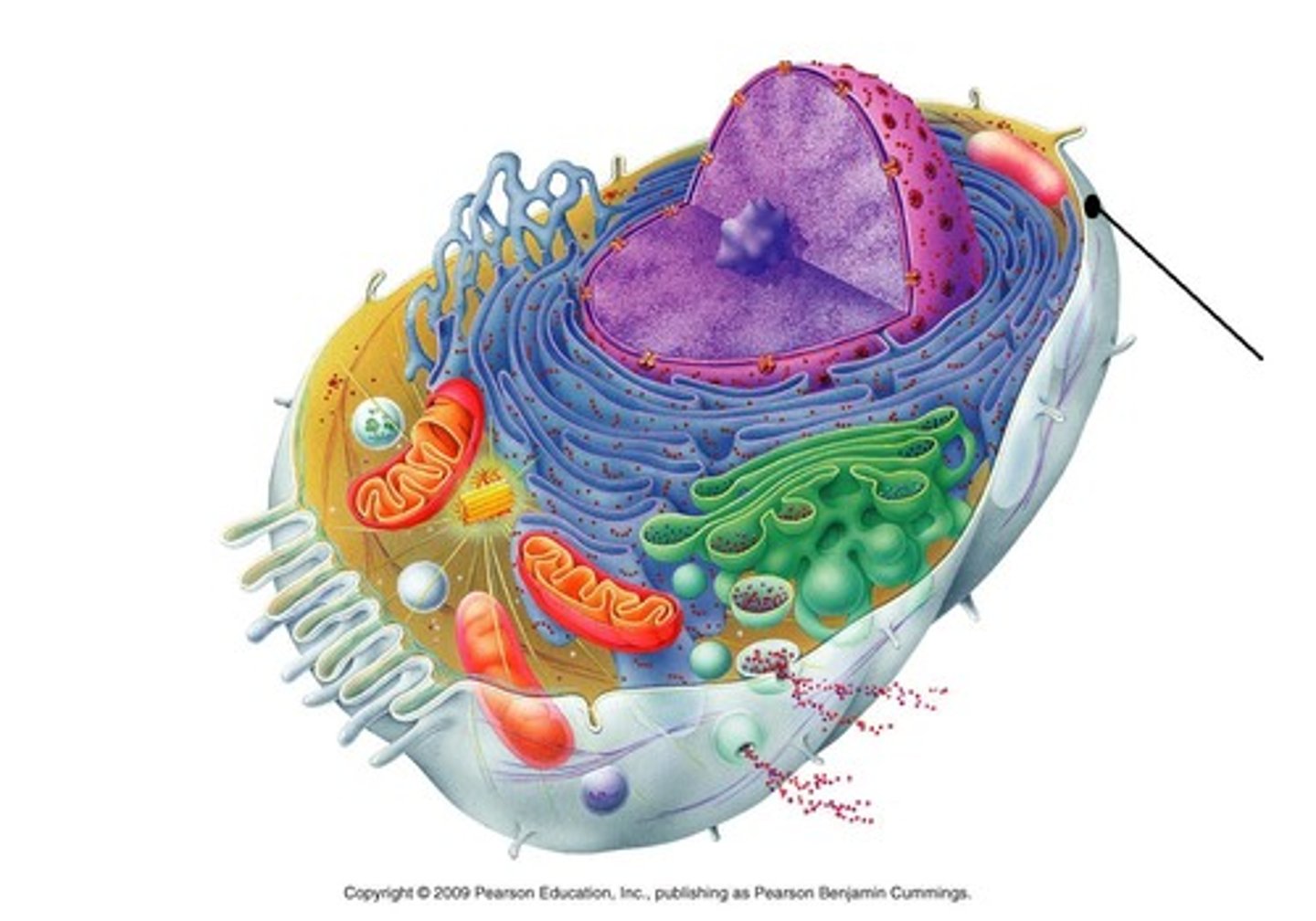
nuclear membrane
decides what goes into and out the nucleus
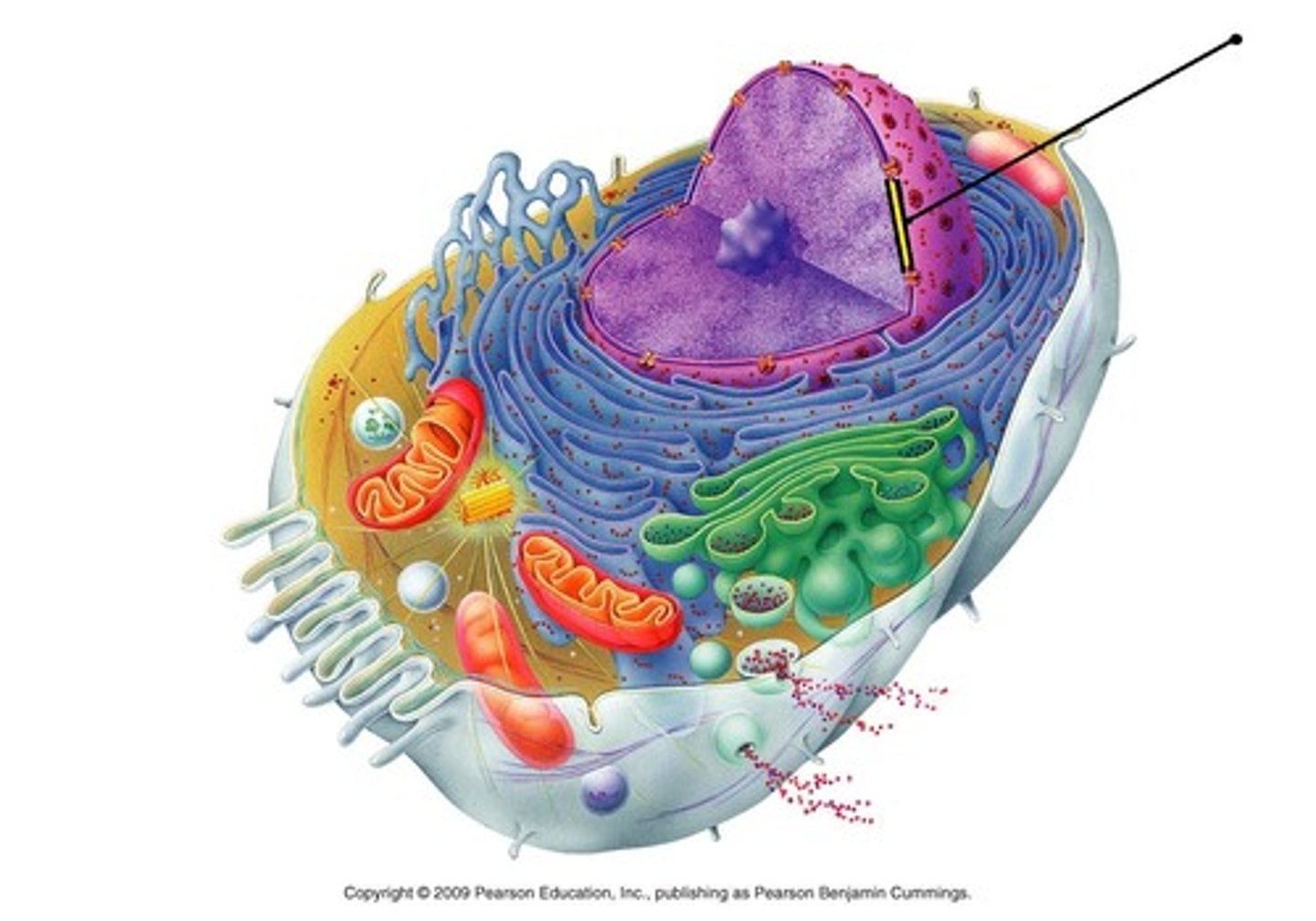
nucleus
directs cell activities

ribosome
makes proteins
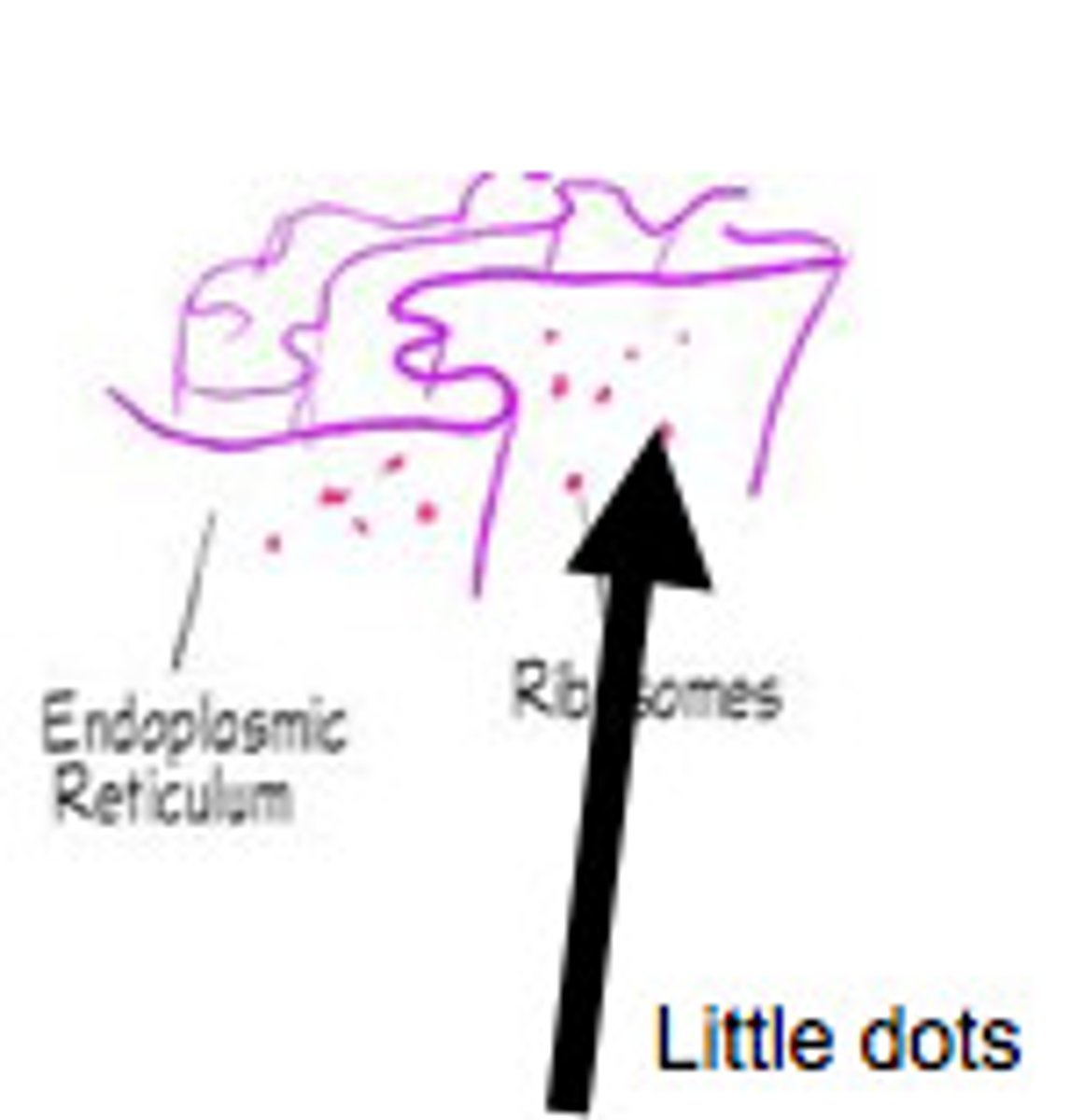
cell wall
supports and protects the plant cell
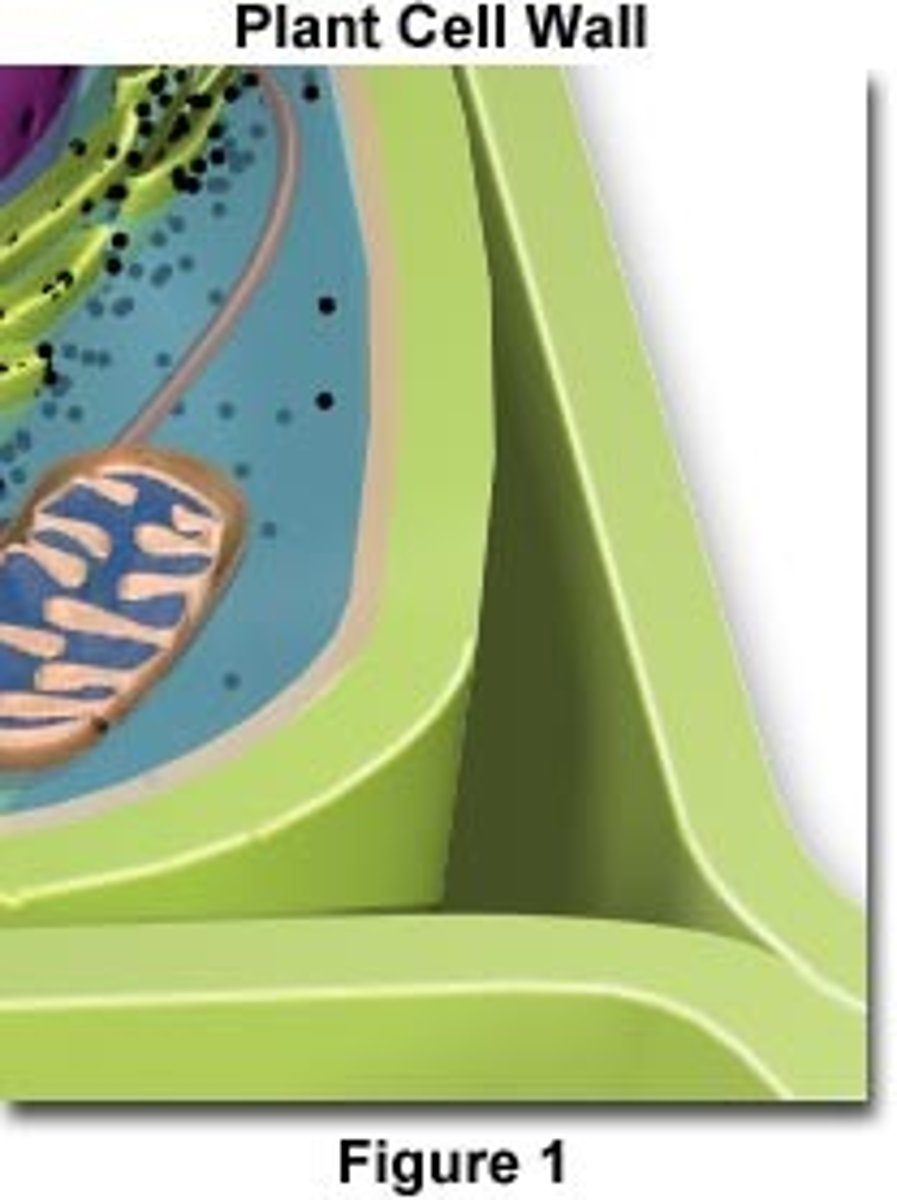
chloroplast
photosynthesis uses sunlight to make sugar
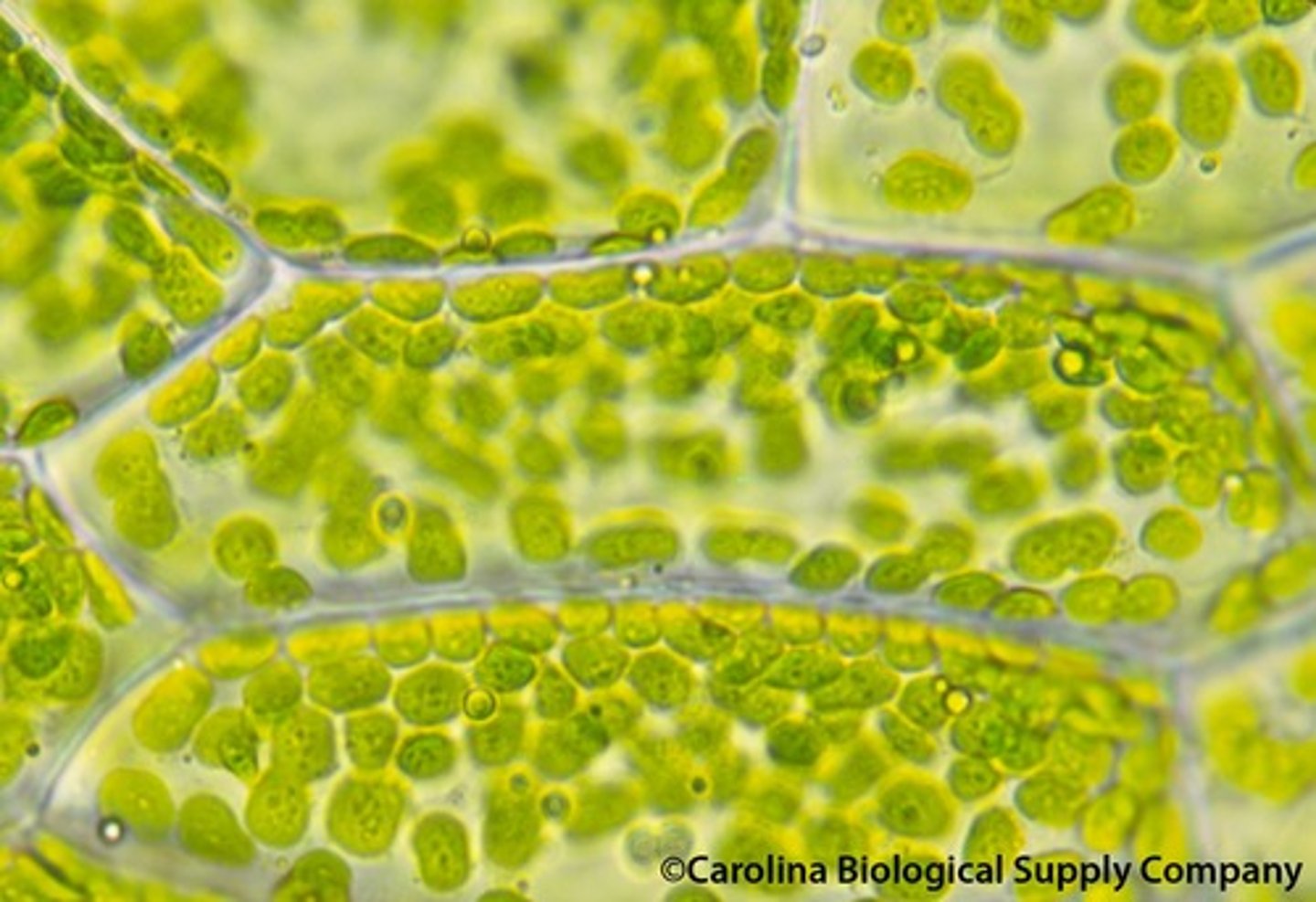
vacuole
help plants maintain shape storage, digestion, and waste removal
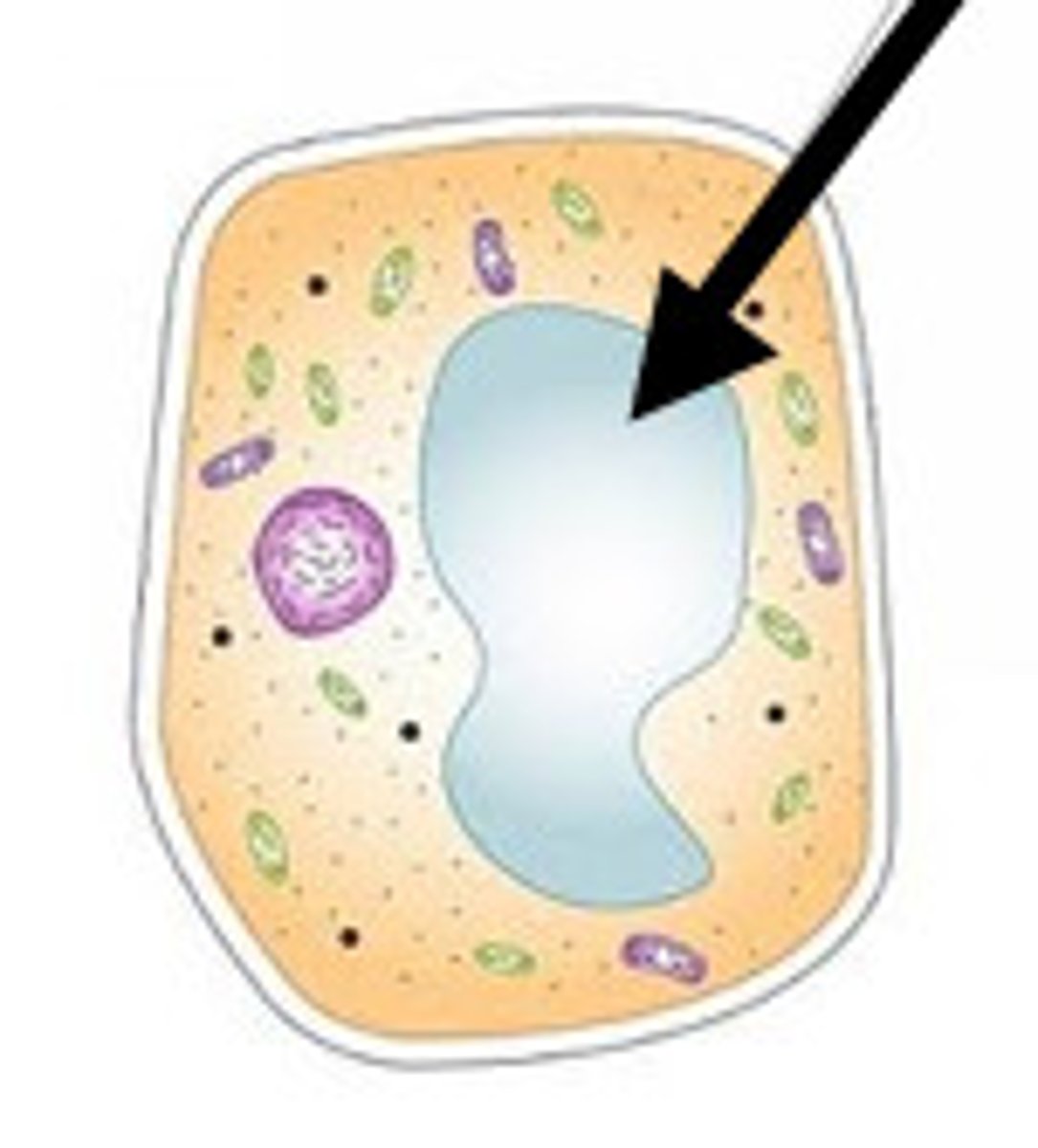
lysosome
disposal of the cell
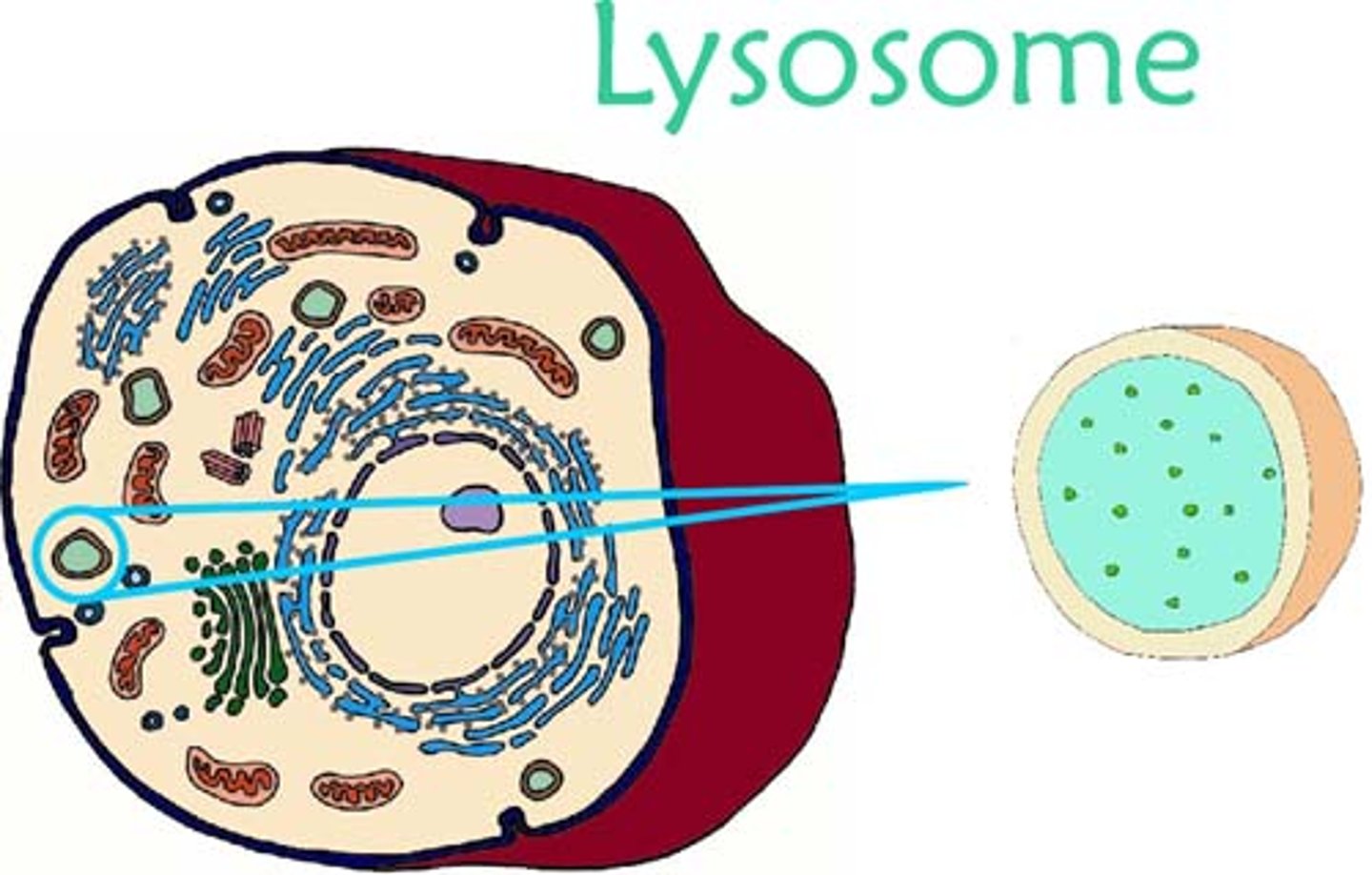
smooth endoplasmic reticulum
transports proteins and breaks down drugs in the cell; does not contain ribosome
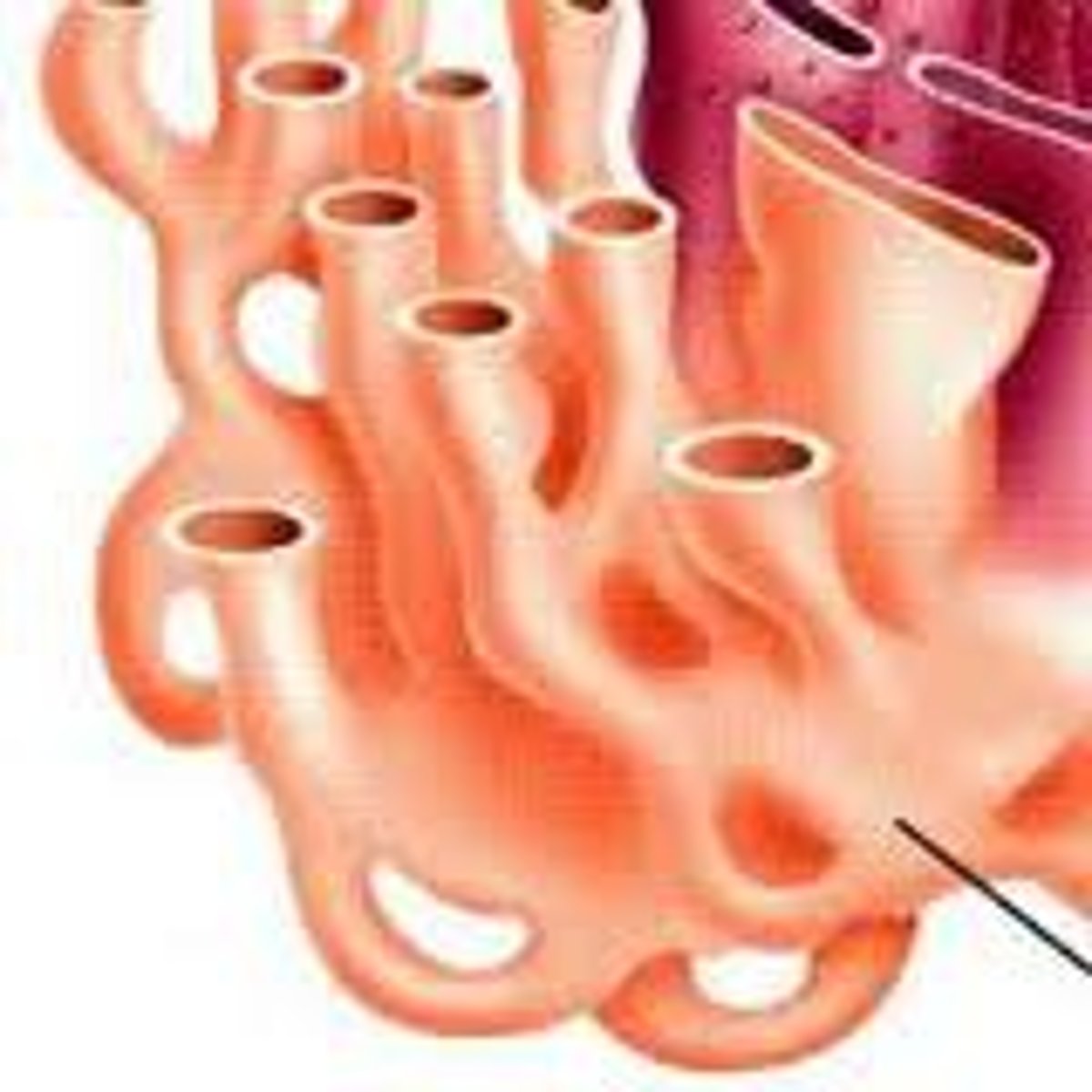
rough endoplasmic reticulum
covered in ribosomes which make the proteins that are transported
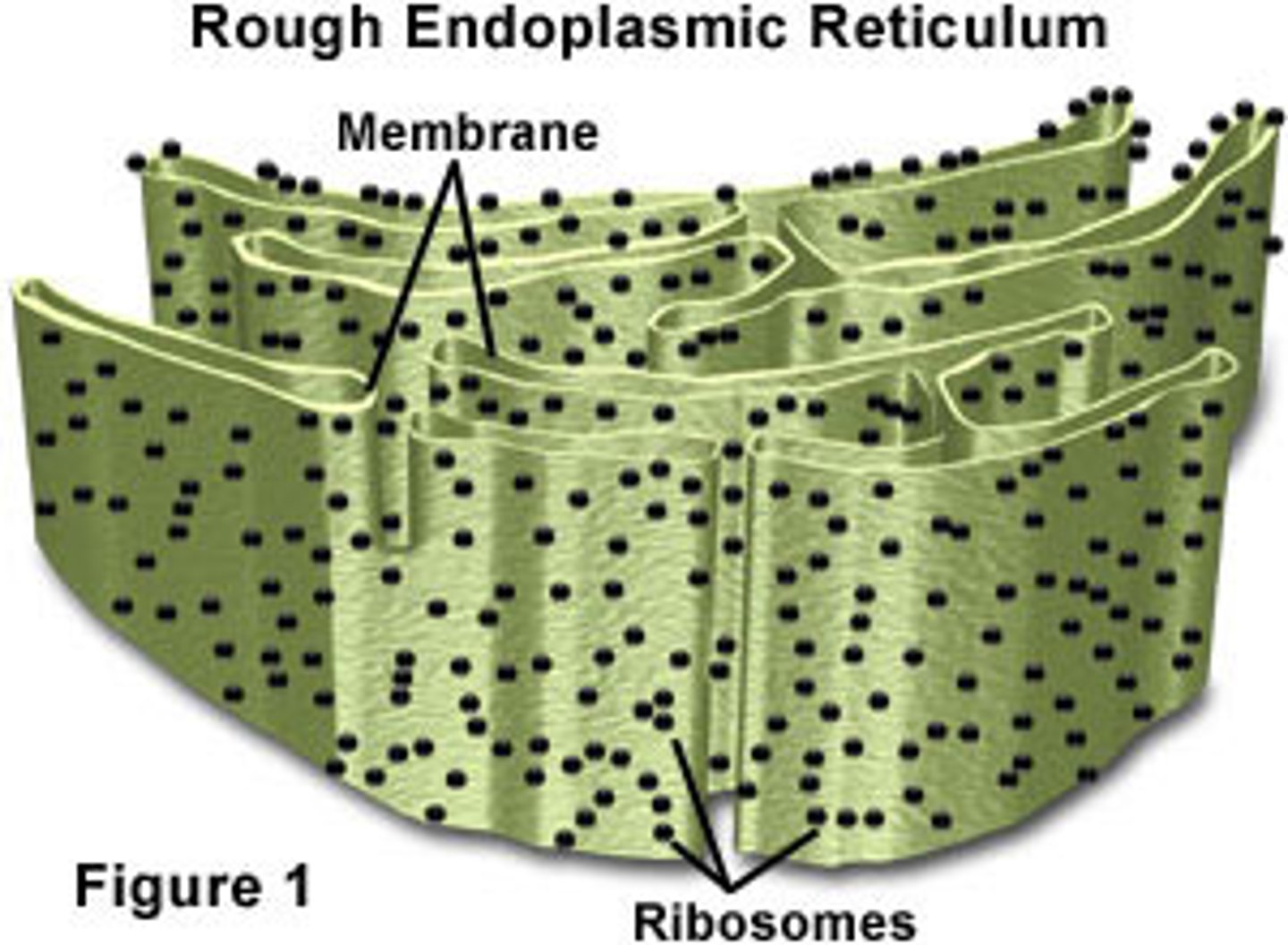
mitochondria
"powerhouse" of cell; produces energy from sugar

Golgi body
processes and packages proteins and lipids; moves materials within the cell and out of the cell in small sac
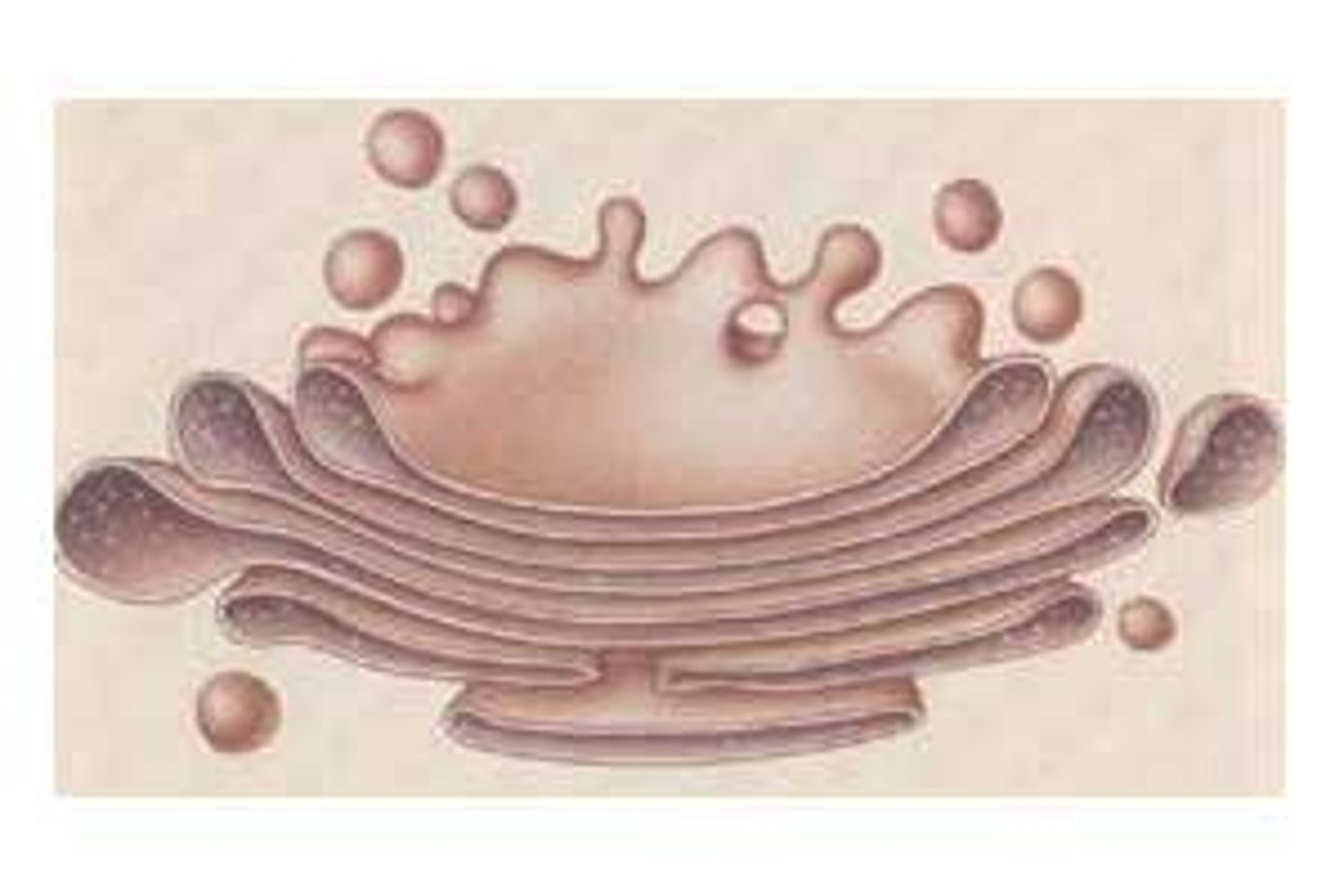
cytoskeleton
Network of protein fibers, is the structural framework for cell shape
centrosome
Made from two centrioles. Organises microtubles and provides cell structure
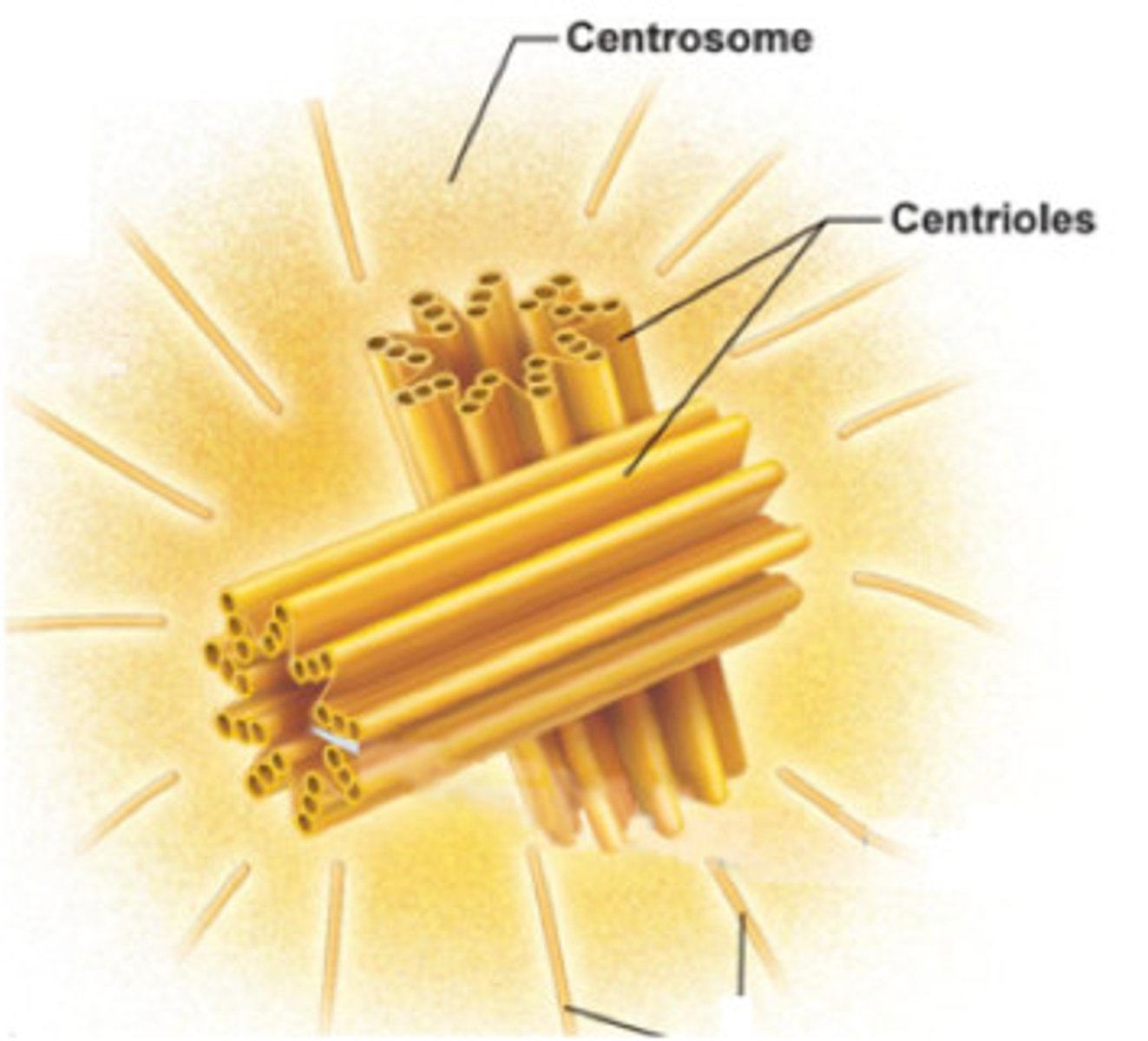
nucleus
regulates all cell activity, composed of DNA
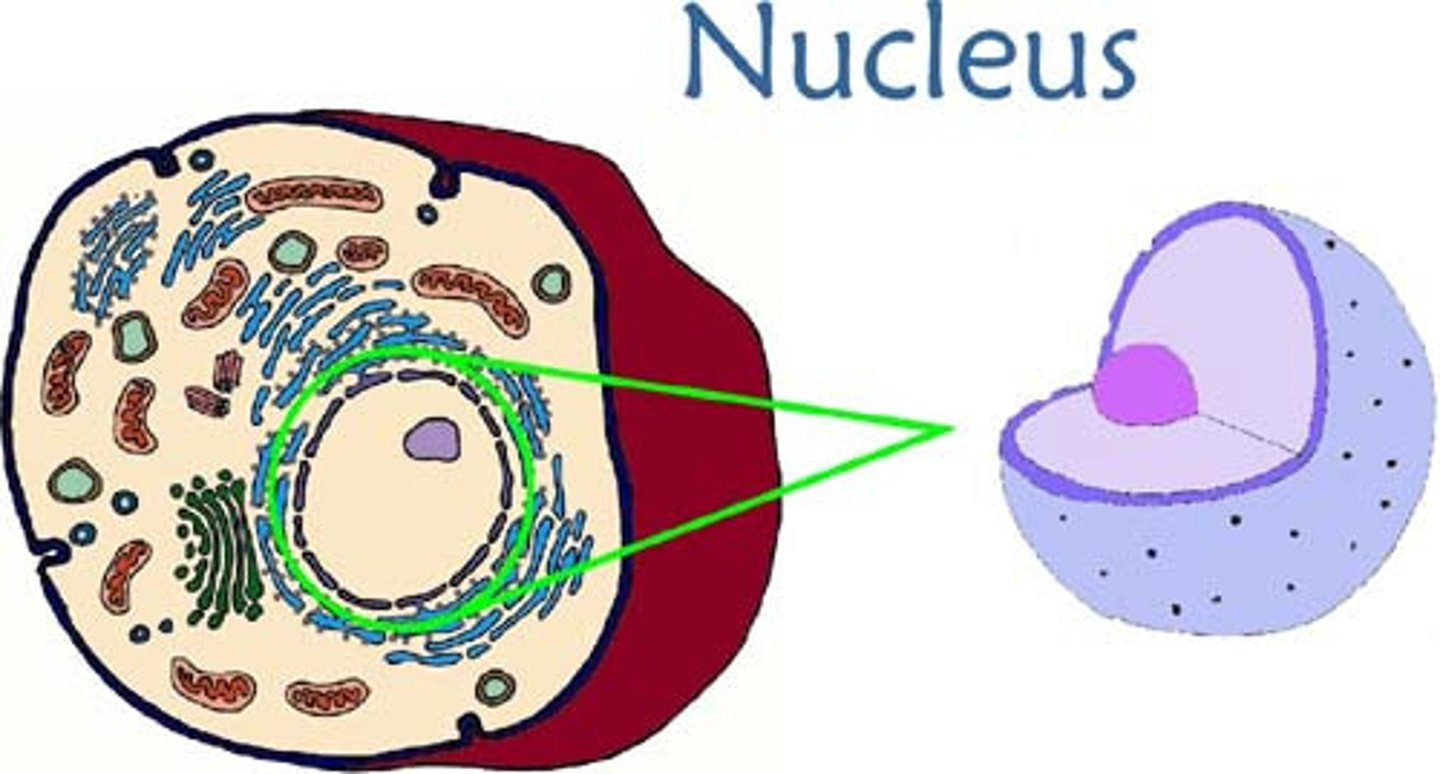
cell/plasma membrane
composed of phospholipid bilayer. Protects the cell from its surroundings
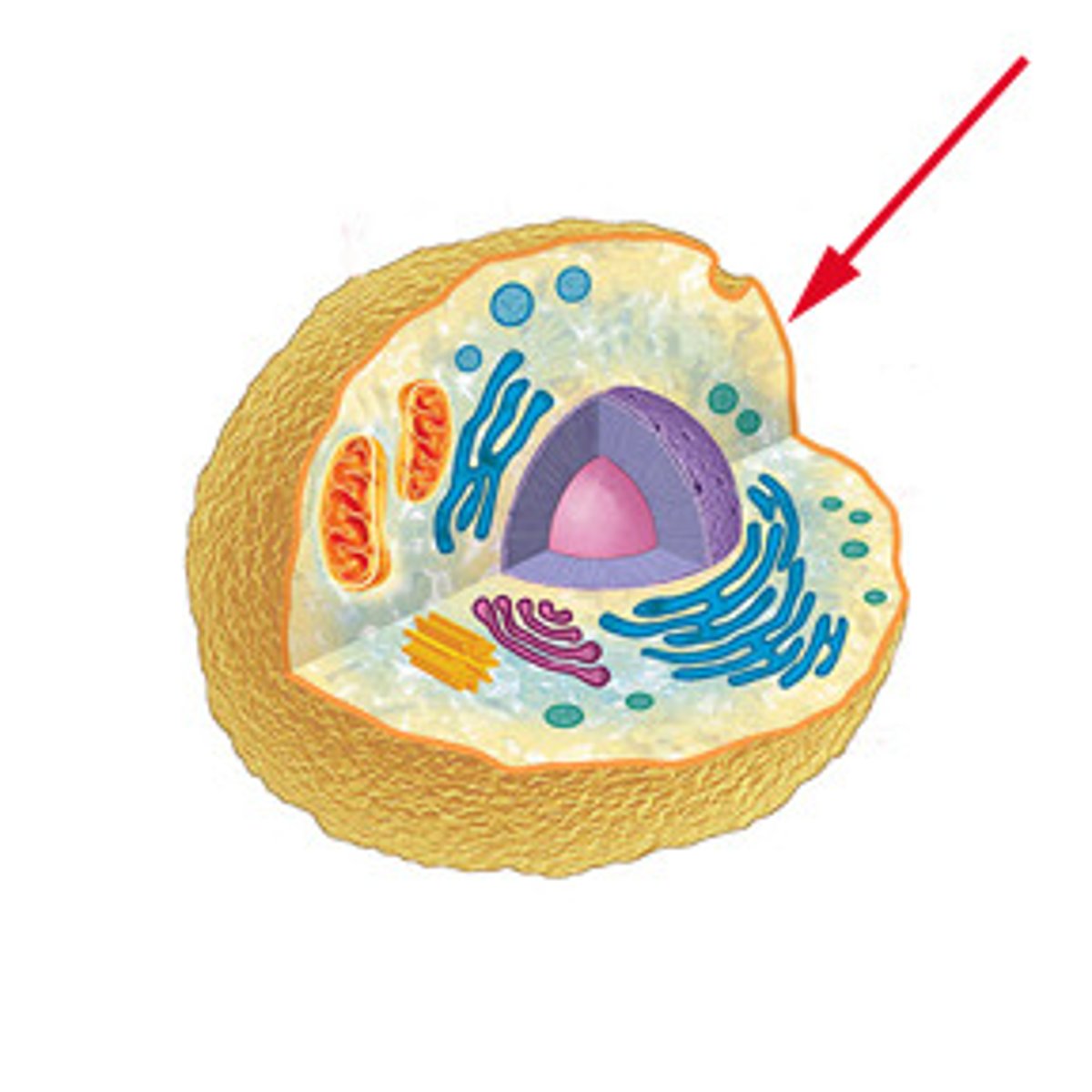
nucleolus
made up of proteins and RNA. Rewrites RNA and combines it with proteins
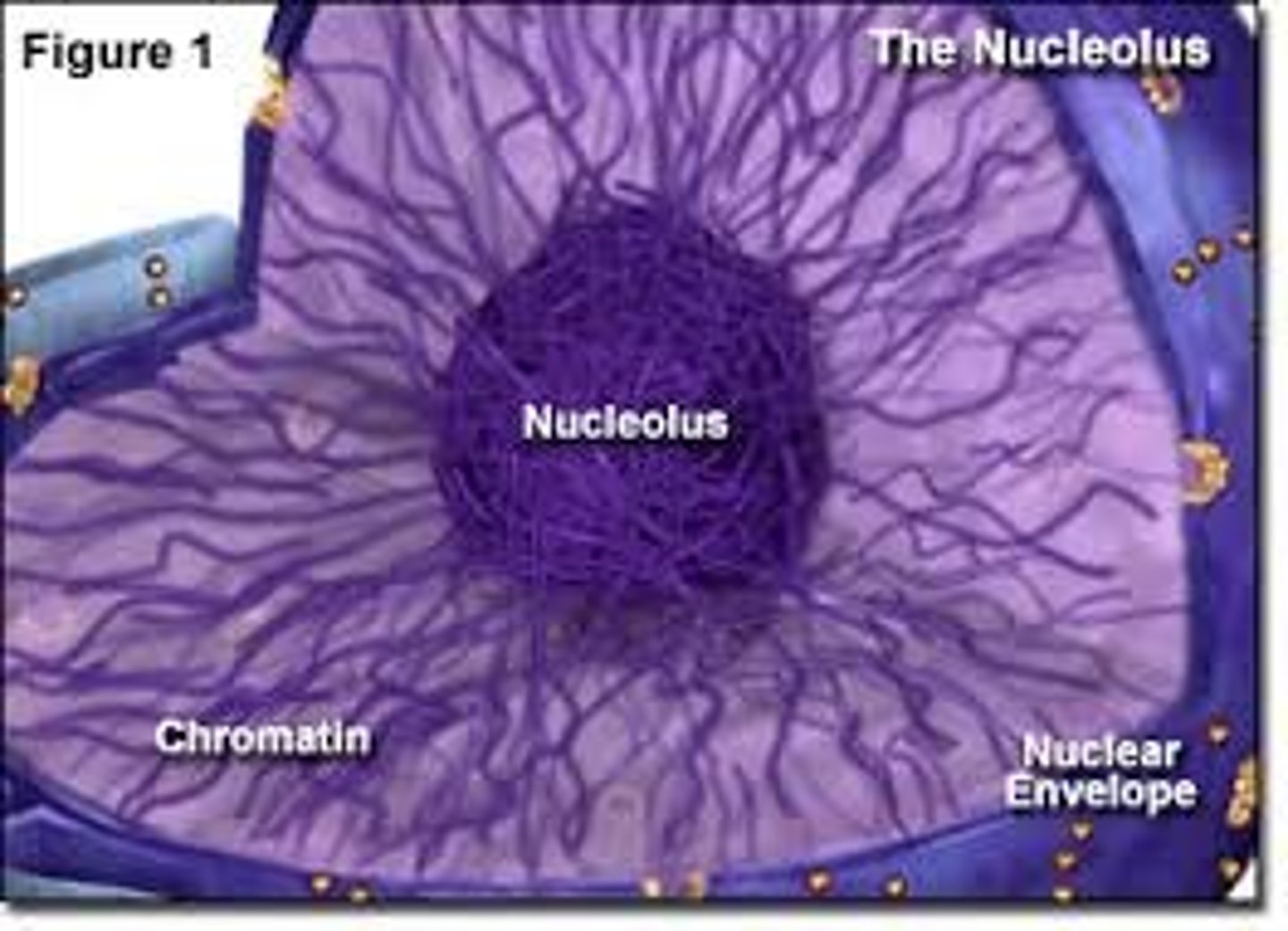
chromosomes
Thread-like structures made up of DNA. Provides organism with genetic information.

golgi apparatus
Stacks of flattened membranous sacs called cisternae. modify's and sorts proteins for secretion

lysosomes
Membrane sac of enzymes. Digests excess or worn-out organelles.
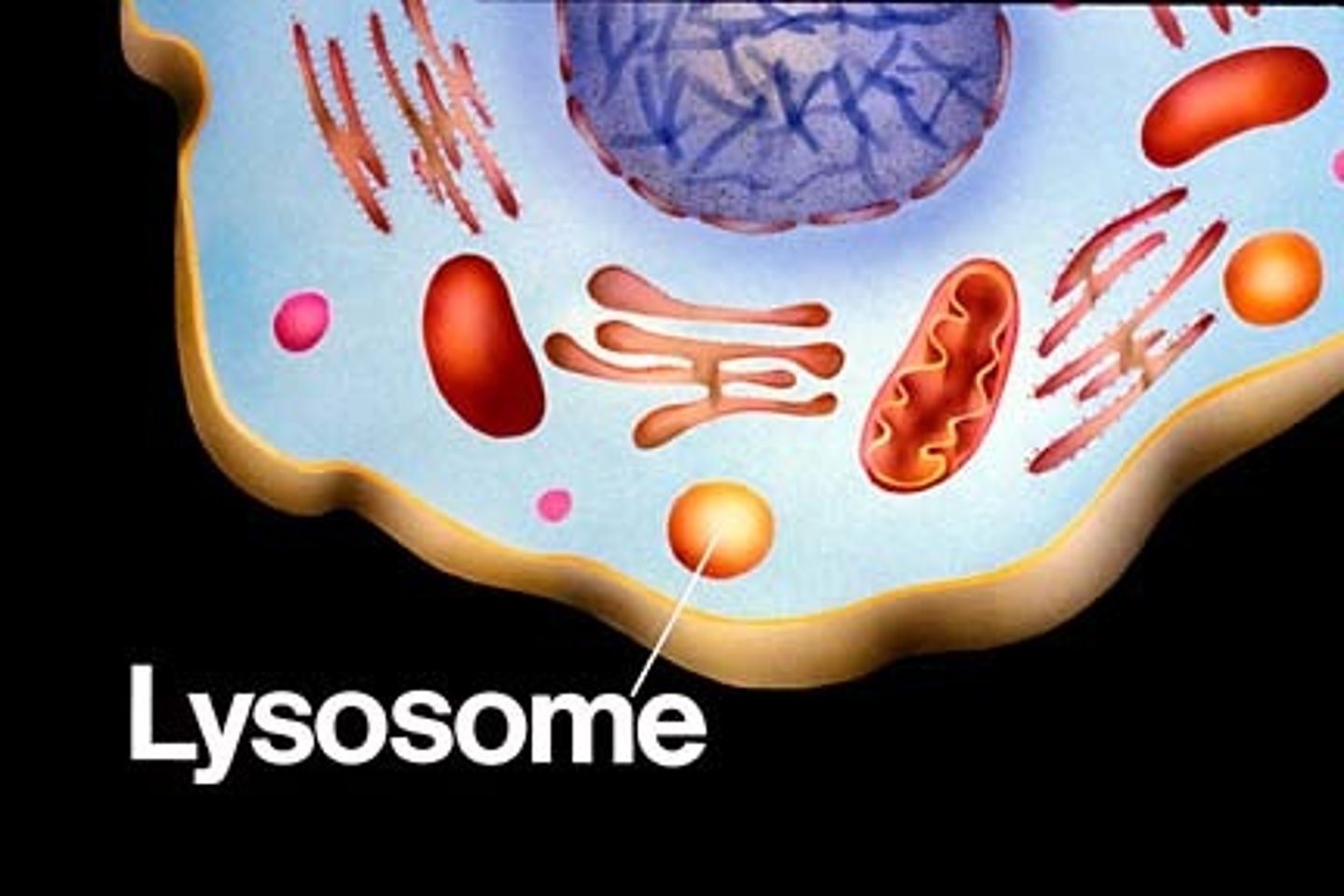
smooth ER
ER which has no ribosomes on it. Regulates and releases calcium ions and processes toxins
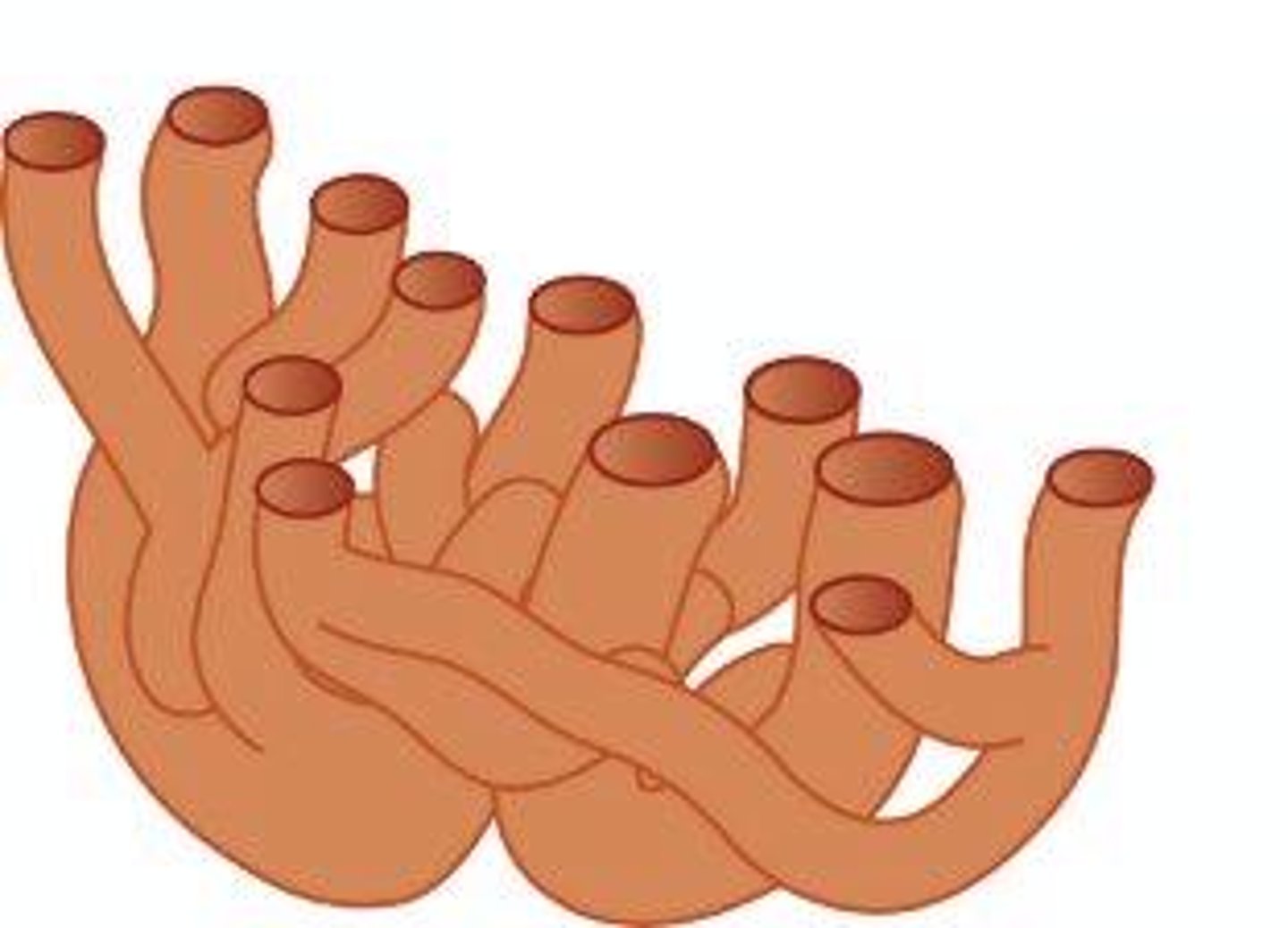
ribosomes
Two subunits made of RNA and proteins. Make proteins
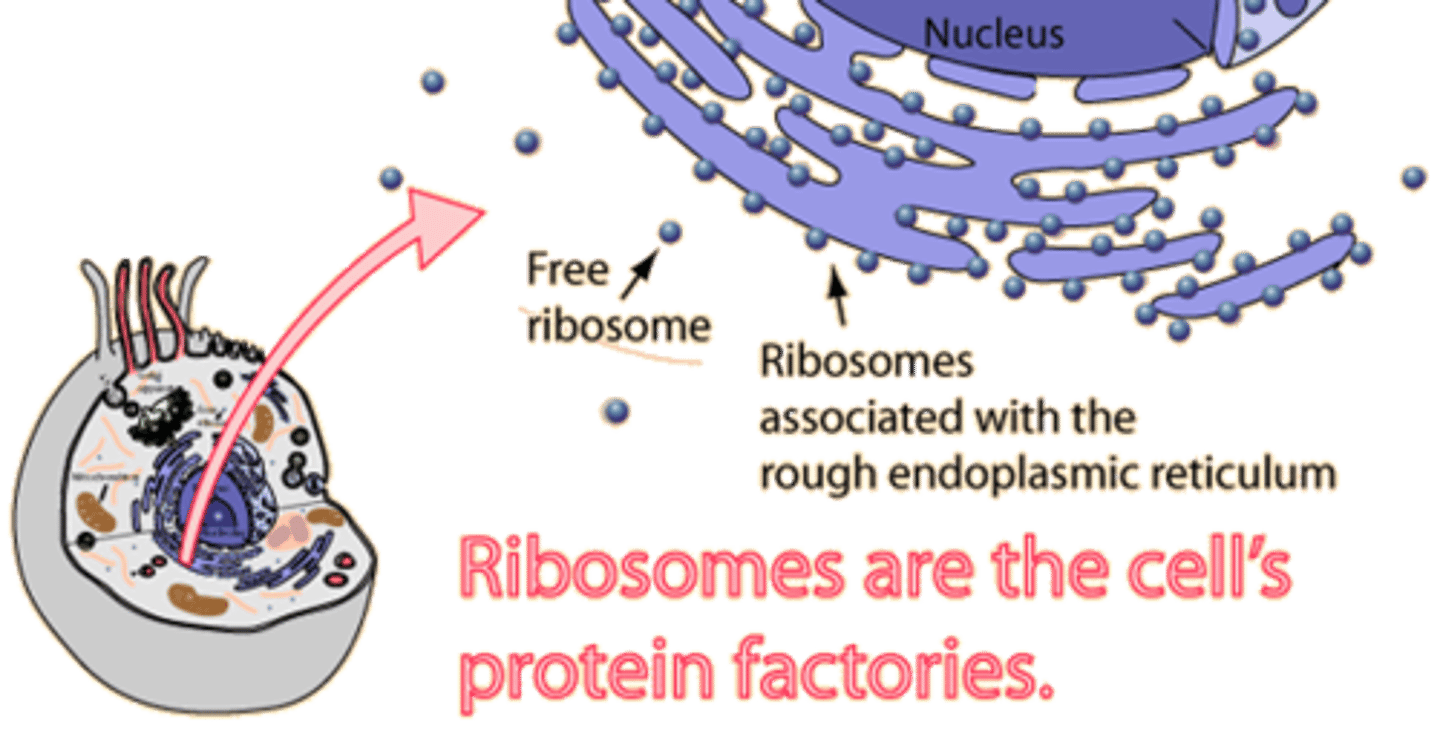
cilia
Organelles that extend from the surface of nearly all mammalian cells. They move a cell or group of cells or to help transport fluid or materials past them
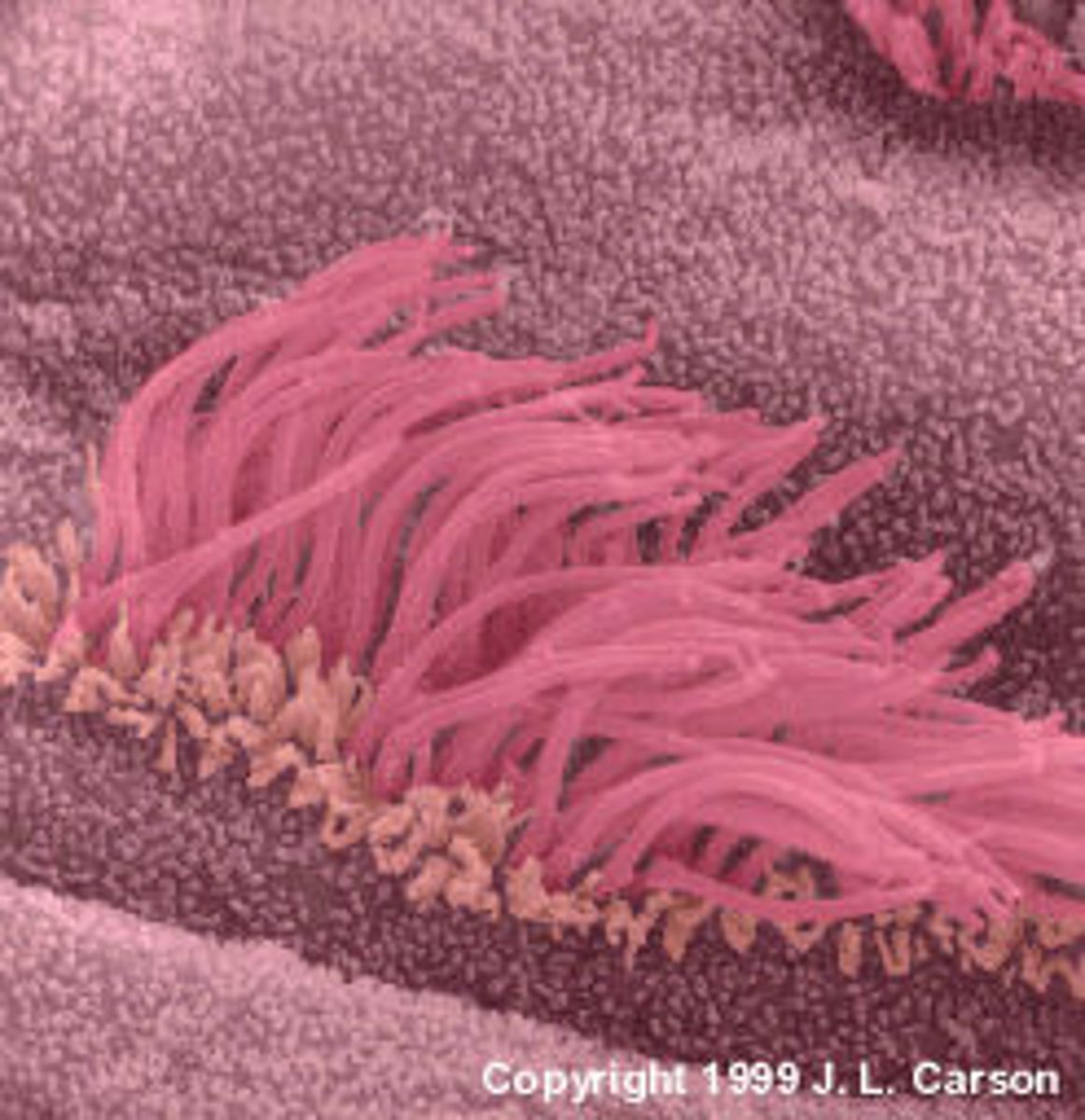
flagella
whip, tail like appenage that propels the cell along
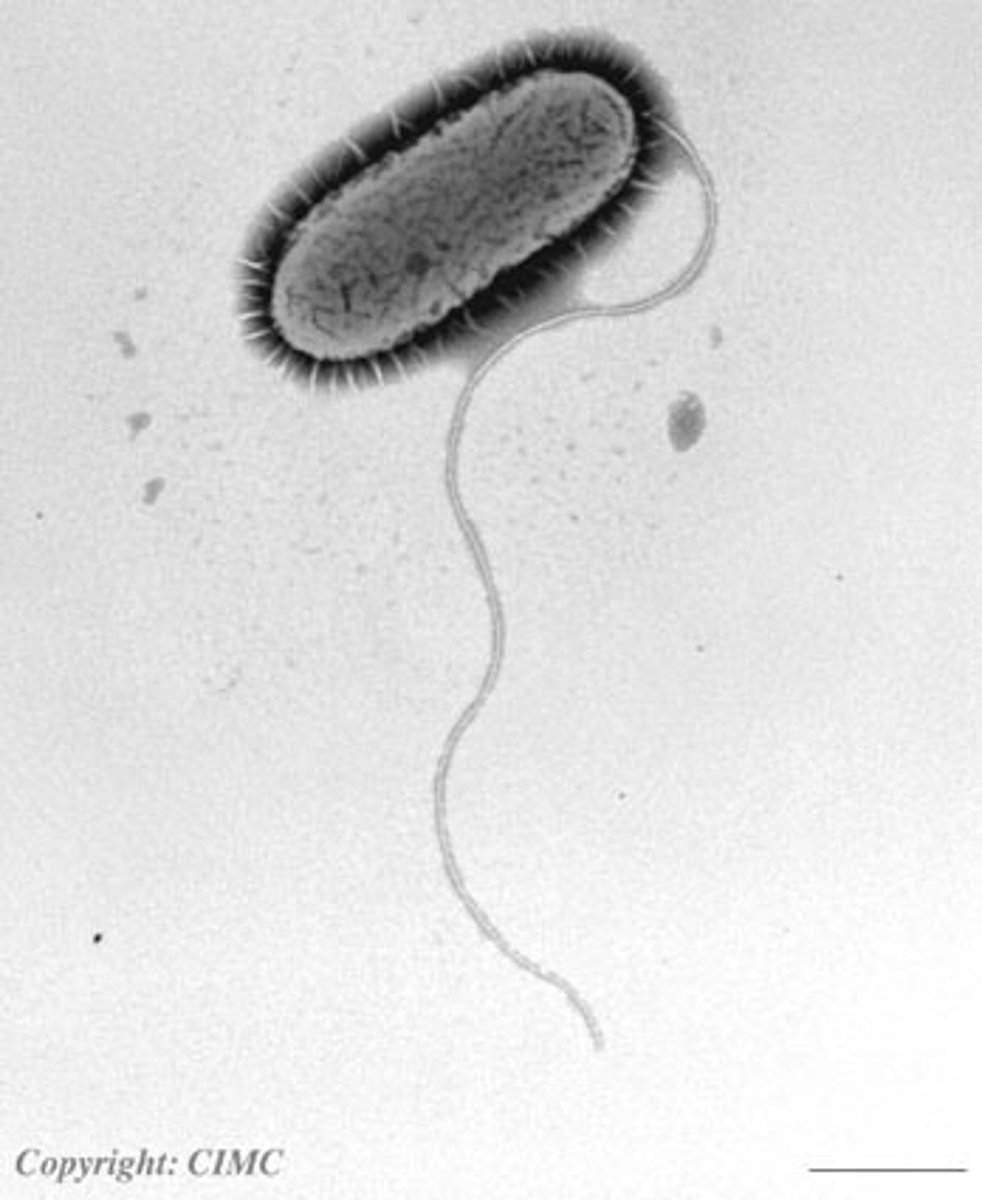
chromatin
efficiently package DNA into a small volume
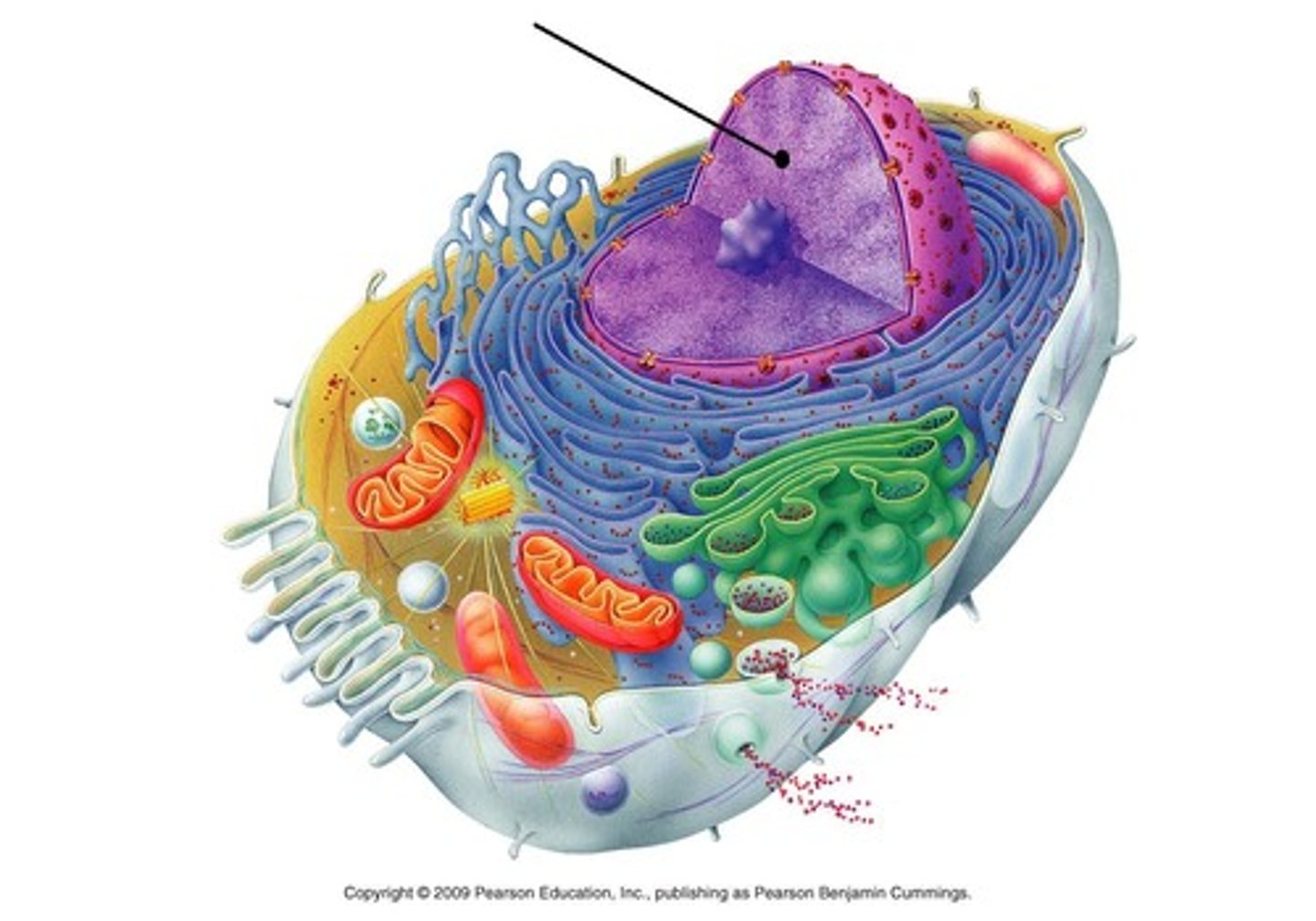
centriole
Small set of microtubules arranged in a certain way. Help in the formation of the spindle fibers.
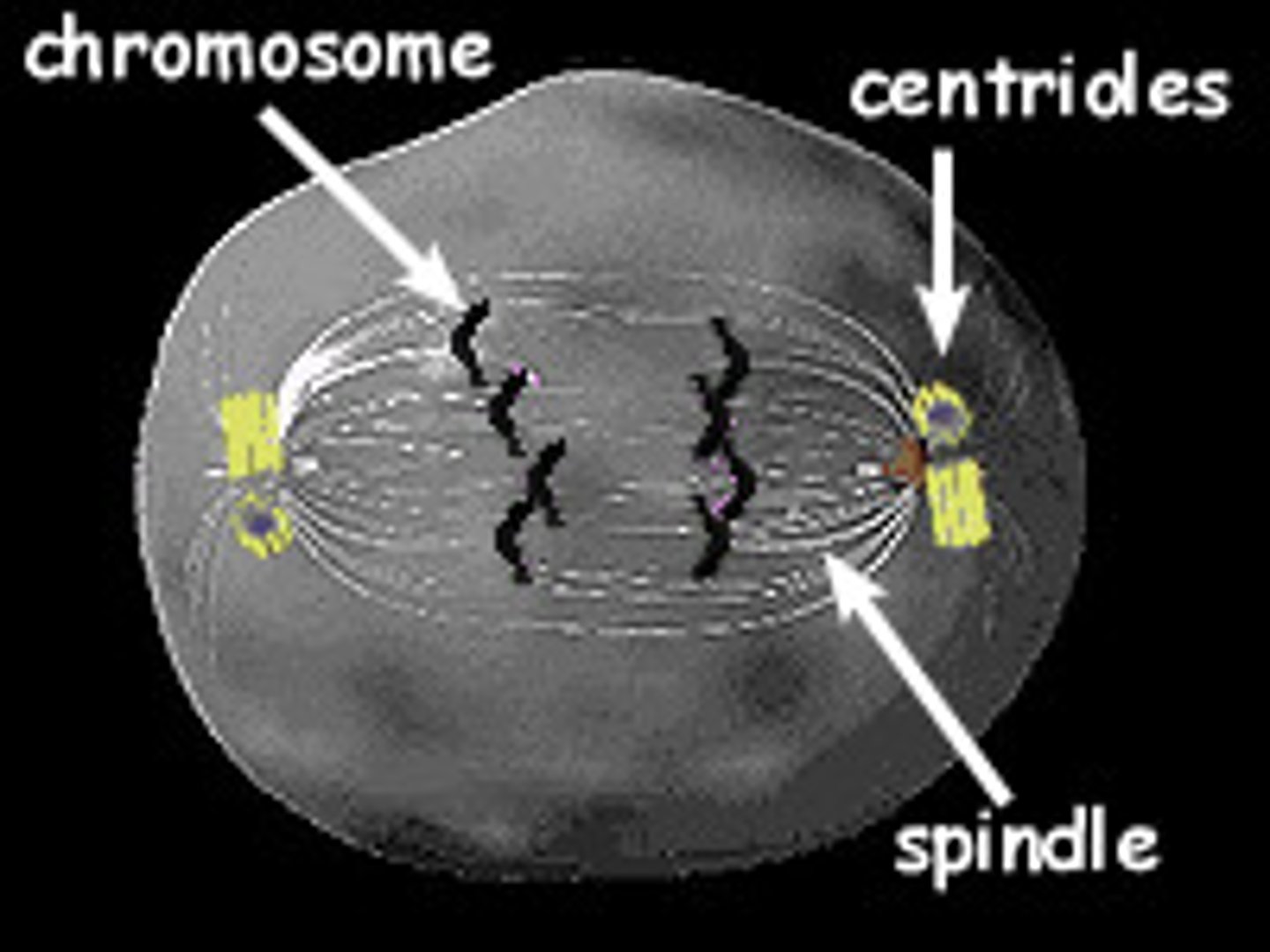
cytoplasm
The material in the cell. Holds the internal components of cells in place.
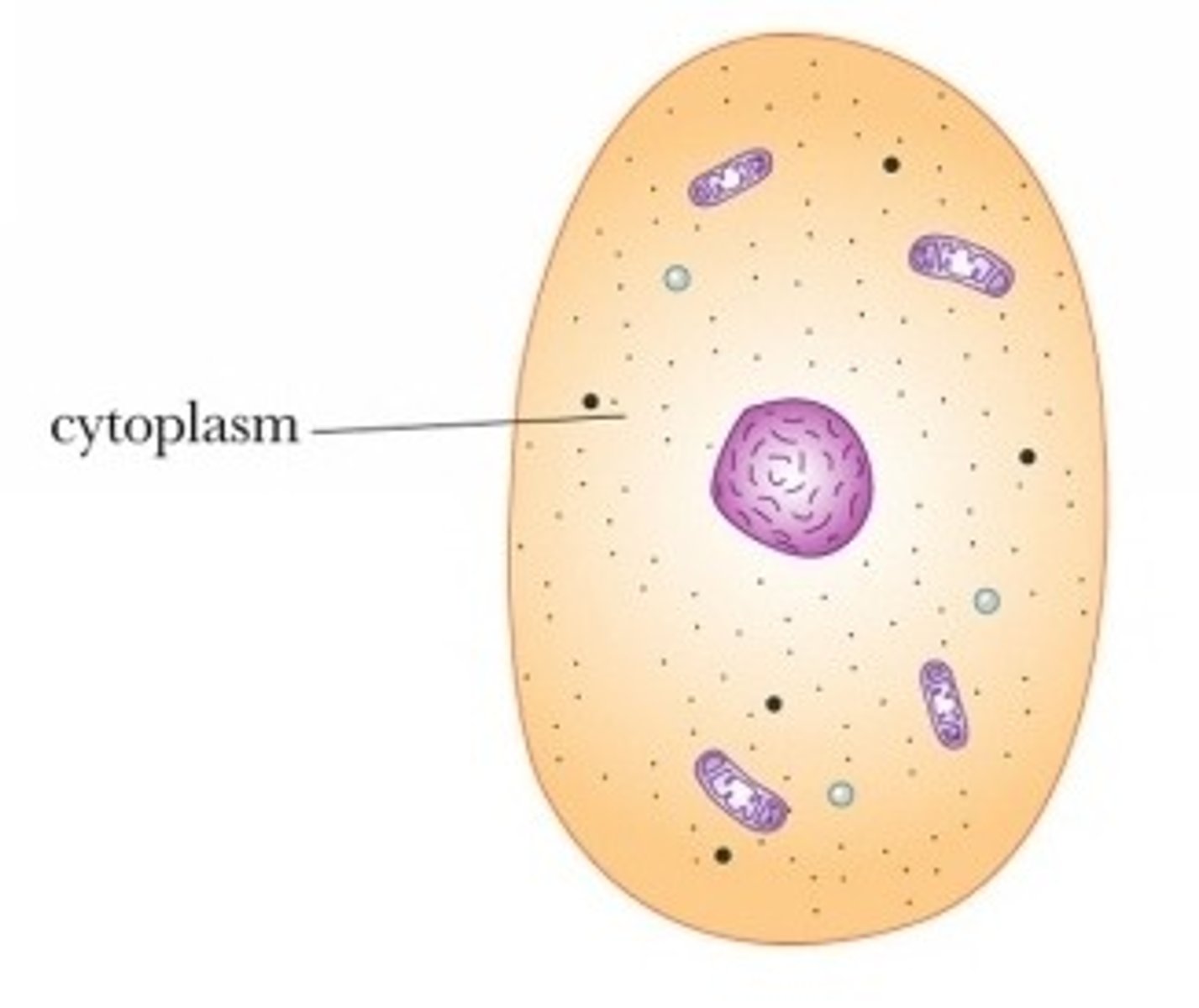
mitochondria
Bound by a double membrane. Produces ATP through respiration
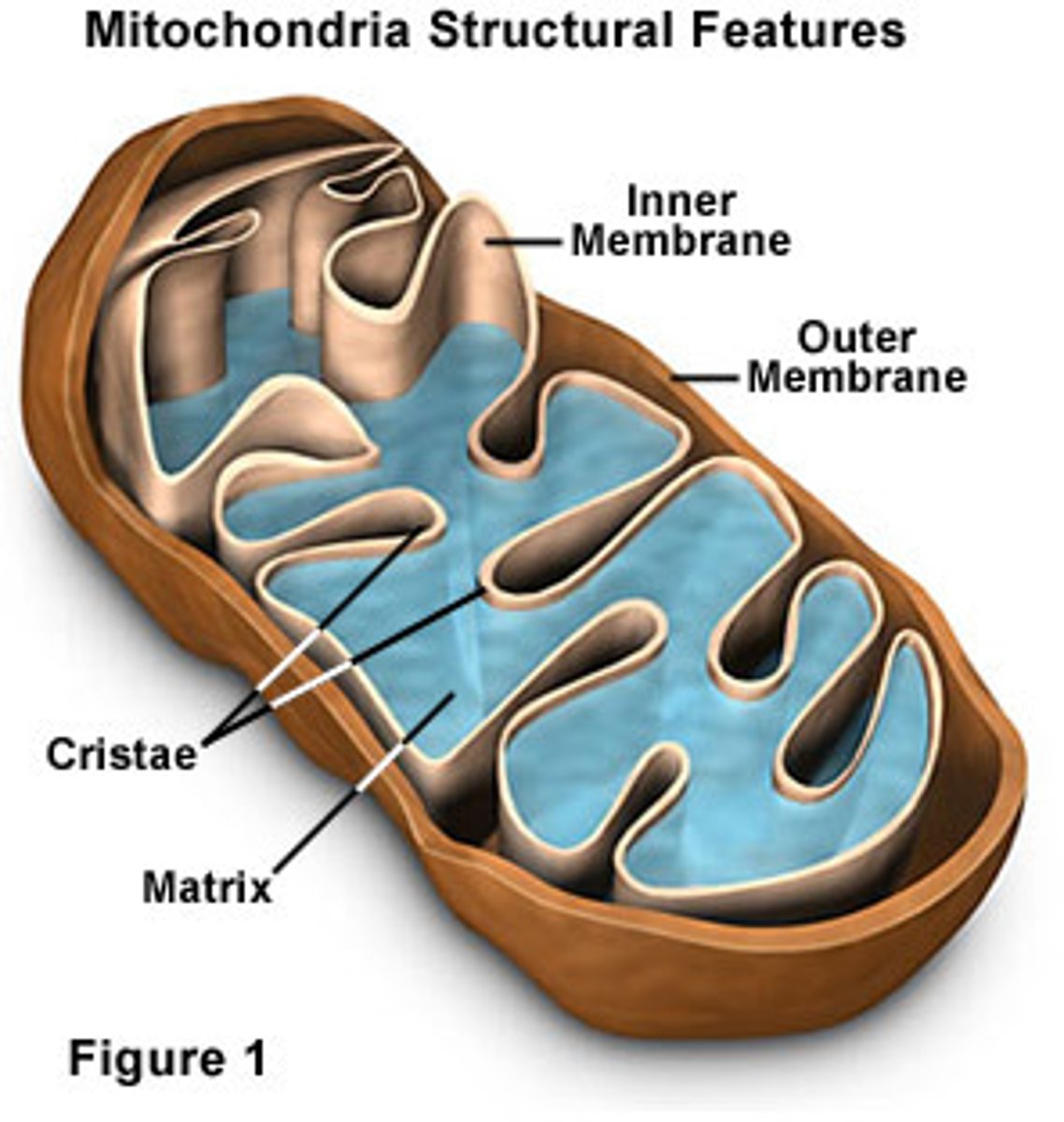
cell wall
composed of cellulose. A filtering mechanism and pressure vessel to prevent over-expansion.
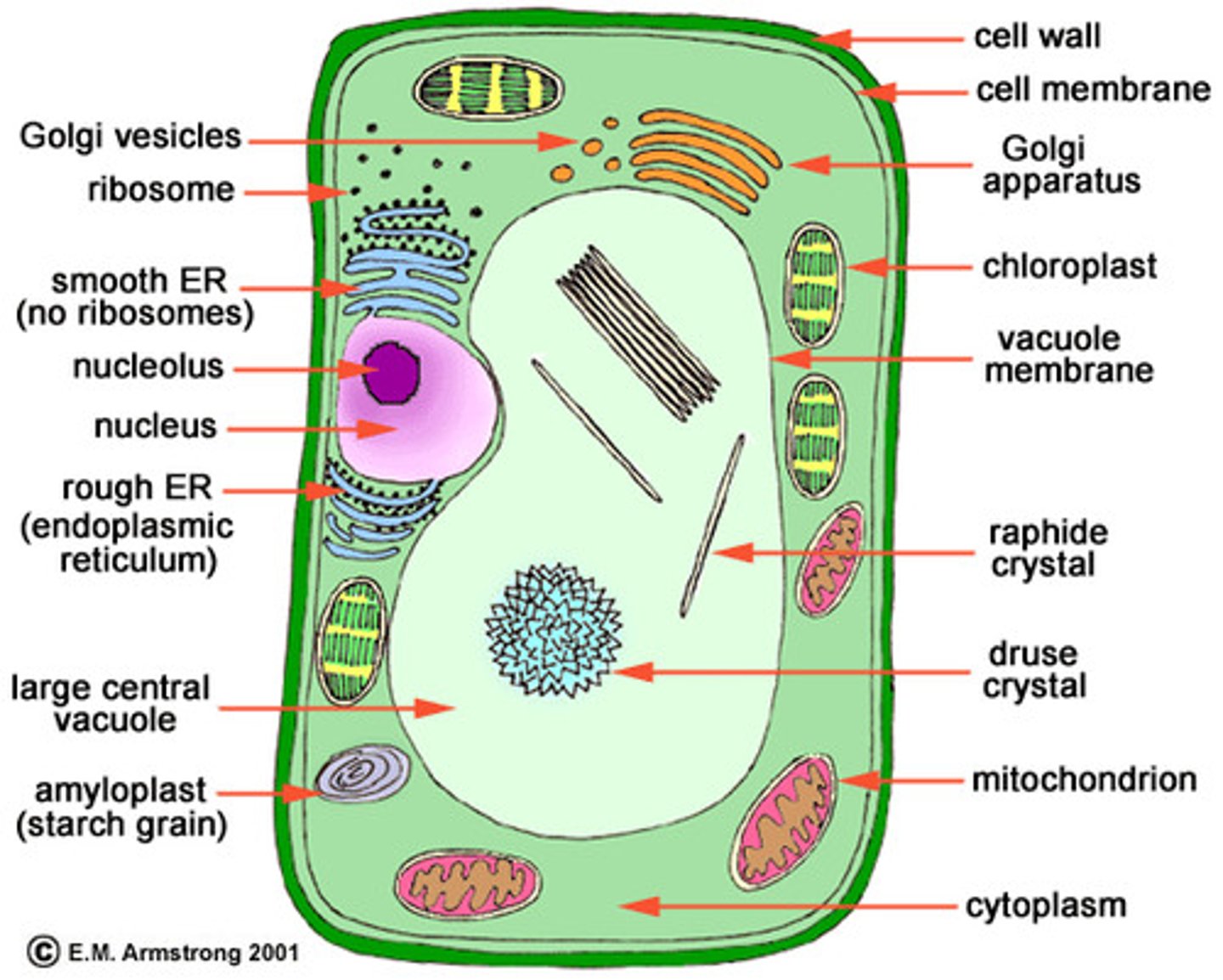
central vacuole
Large membrane-bound vesicle. involved with storage, cell growth, digesgtion, waste disposal.

rough ER
Ribosome covered ER. responsible for the assembly of proteins, translation.

chloroplast
two membranes around a fluid stroma which contain thylakoid stacked into grana. involved in photosynthesis

(transport) vesicle
fluid enclosed by lipid bilayer. moves molecules between locations inside the cell

fimbrae
finger-like projections that allow bacteria to stick to the environment
pili
appendages that allow bacteria to attach to each other and to transfer DNA
cytoplasm
supports and protects cell's organelles
